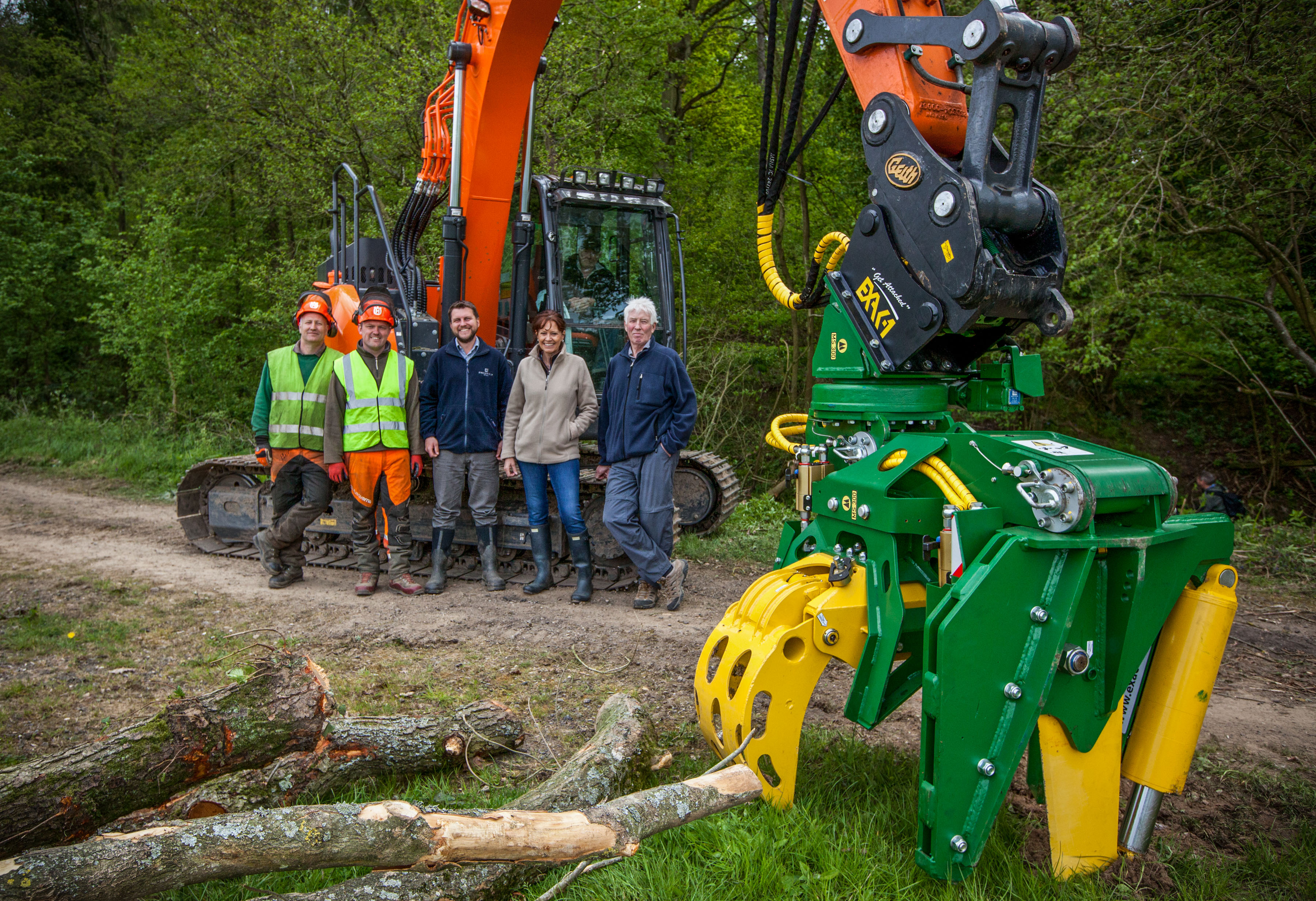Alongside her illustrations, PhD Researcher Nerea Ferrando Jorge describes the role of leaky barriers for the River Pang NFM project
What’s the challenge?
Flooding is currently one of the most socio-economically costly natural disasters. The risk of flooding becomes even more worrying with climate change as low-lying lands are particularly vulnerable in the light of changing rainfall and rising sea levels. Moreover, under high emission scenarios, the annual cost of flooding will increase in the UK almost 15-fold by the 2080s.
What is natural flood management?
Natural flood management (NFM) is a nature-based solution that is used to reduce the risk of flooding. It emulates a healthy river catchment that stores water in the landscape and slows the flow of water downstream. These more natural ways of reducing flood risk have clear environmental benefits in comparison to other less sustainable, hard engineering alternatives.
How to slow the flow?
To reduce flood risk downstream, NFM incorporates a wide range of techniques. Man-made leaky barriers are a form of NFM that are designed to imitate beaver dams. They are made up of log piles that create a stepped landscape. The river flow is partially obstructed as the water fills each step and slowly filters through the gaps between the logs. This slows the water flow by diverting it onto floodplains, increasing soil infiltration, enhancing water storage, and reducing flooding downstream.
Trees and vegetation in the flood plain can help further reduce flood peaks. Tree roots help water penetrate deeper into the soil at a faster rate under and around trees. This means less surface run-off and more water storage in the soil. Some of this water is also released back into the atmosphere by transpiration via leaf stomata.
In addition, the interception of rainfall by a canopy of leaves, branches, and trunks can spread the effect of a rain storm over a longer time period of time since they slow down the rain before it hits the ground. This holds back water and allows more of it to evaporate back into the atmosphere.

Types of leaky barriers
There are 3 kinds of leaky barrier: natural (a tree has fallen), semi-natural (tree trunks and branches are cut and positioned to look natural), and structured (purposefully engineered)
Semi-natural leaky barriers are popular amongst community groups working with natural processes as an affordable and sustainable action that they themselves can implement without investment in large infrastructure.
What is the project?
The research programme aims to reduce flooding in Berkshire with semi-natural leaky dams. To date, over 64 leaky barriers have been installed within the River Pang and its tributaries from 2018. The effectiveness of these leaky barriers is being monitored in a number of ways, including: river flow, river level, geomorphic surveys, and time-lapse footage.
It is collaborative project, involving volunteers from the Pang Valley Flood Forum (PVFF), researchers at the University of Reading, landowners and managers of the Englefield Estate, and the Environment Agency. It is a participatory method where the local community have an input in flood management as opposed to a top-down approach. This is an integral part of NFM. It is important to put local people back at the heart of decision-making because to deal with this growing problem, we all have to work together! Watch a video about the project.
Image above shows leaky barriers being installed (Englefield Estate, 2019)
Are leaky barriers effective?
Findings from previous and ongoing work have demonstrated that these measures significantly delays and reduces the magnitude of flood peaks during rain storms and can reduce flood risk downstream. They do this by storing and slowing water, increasing flow connectivity, and increasing soil infiltration. Leaky barriers however are most effective at mitigating smaller, rather than large flood events. Although NFM is not the complete solution, it is one of many tools needed to manage flood events and can be used in conjunction with other flood management solutions.
Other benefits
Natural flood management not only reduces flood risk, but it can also deliver multiple other environmental, social and economic benefits for people and wildlife, including helping restore habitats, improve water quality, sequester carbon, increase biodiversity, and even increase property values.
Leaky barriers are a low-cost solution that use natural materials and processes, providing an environmentally sensitive way to reduce flood risk and protect areas where hard flood defences are not feasible.
Image rights
To use any illustrations contained within this blog, please contact Nerea: n.ferrandojorge@pgr.reading.ac.uk. Visit her website here.
Funding
Research to support evaluation of the PVFF Defra Leaky Barriers projects has been funded by EPSRC Twenty 65, NERC Landwise, and the University of Reading.





